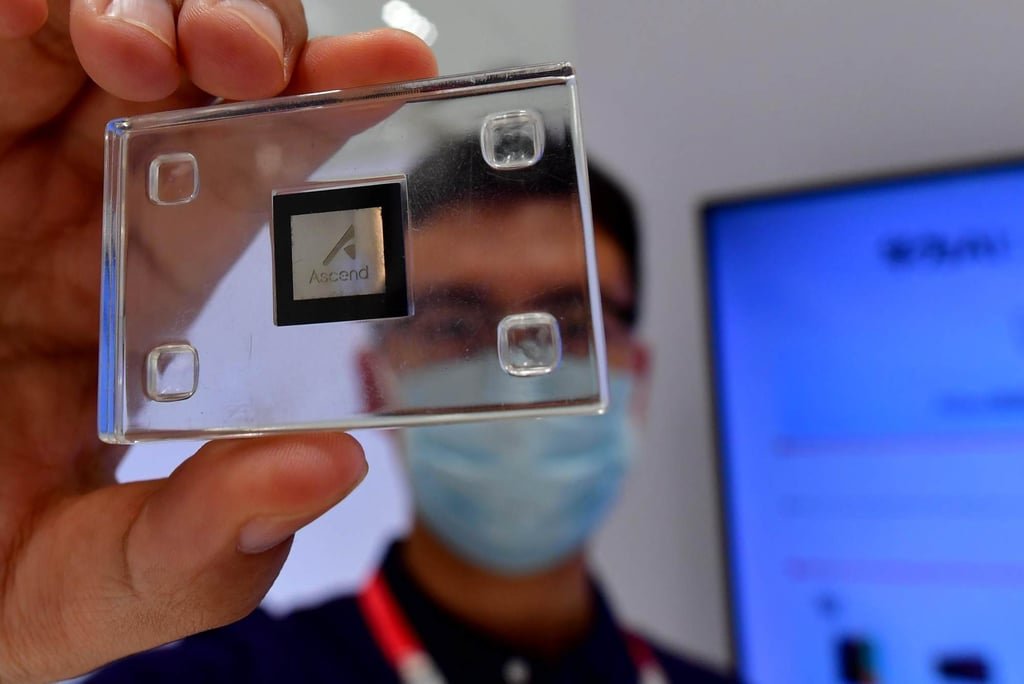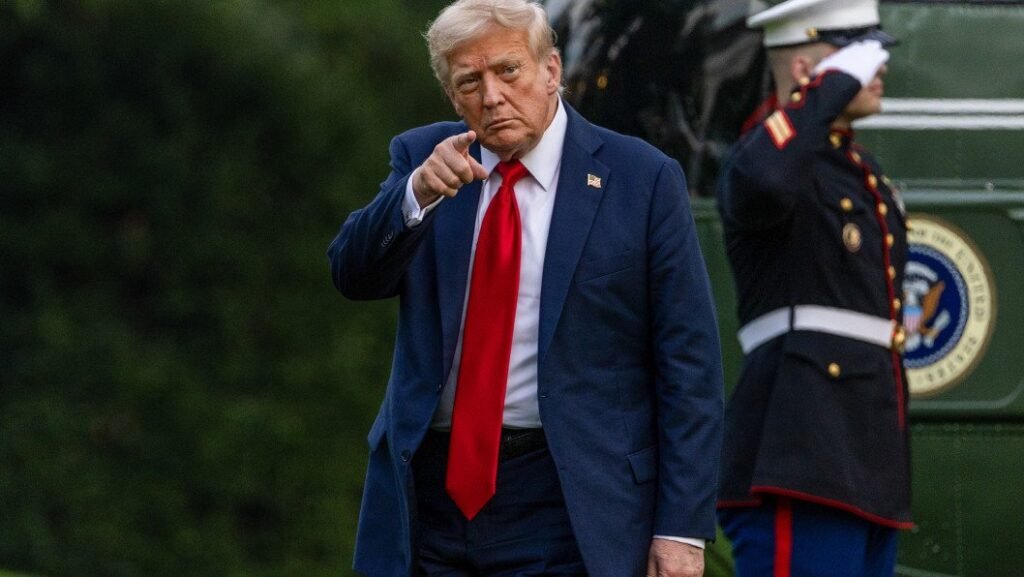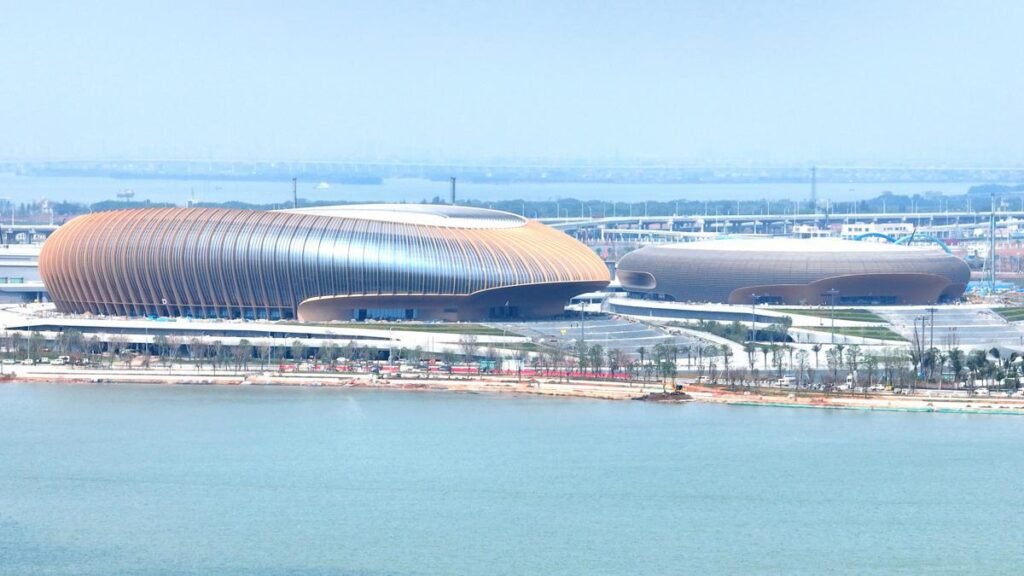A man walks past China’s and USA’s flags before a meeting between US Treasury Secretary Janet Yellen and China’s Vice Premier He Lifeng at the Guangdong Zhudao Guest House in the southern Chinese city of Guangzhou, on April 5, 2024.
Pedro Pardo | Afp | Getty Images
The U.S. and China have yet to announce an extension to their tariff deadline, with tensions over several thorny issues flaring up again just as a fragile truce nears its expiry.
Following the latest bilateral meeting in Stockholm in July, Beijing had struck an optimistic tone, saying that both sides would work toward extending the tariff truce by another 90 days.
U.S. negotiators, however, had put the ball in President Donald Trump’s court on prolonging the tariff truce. Trump, so far, has offered little indication on whether he will go for an extension, stoking concerns that tensions between the world’s two largest economies could rise again.
In May, the two sides agreed to a 90-day tariff truce that reduced duties the prohibitive 145% in April while also pausing a series of punitive measures, allowing room for further negotiation to reach a lasting deal. That agreement is set to expire Tuesday.
China’s U.S.-bound shipments currently face a 20% tariff related to the country’s alleged role in the flow of fentanyl into the U.S. and a 10% baseline tariff, stacked on top of a 25% duty on certain goods imposed during Trump’s first term. American goods to China are subject to over 32.6% tariffs, according to the Peterson Institute for International Economics.
The Office of the United States Trade Representative and Ministry of Foreign Affairs of China did not respond to CNBC’s requests for comments.
While an official tariff extension still hangs in the balance, experts widely expect a summit between Trump and Xi to take place in Beijing in the coming months.
“That implies a more stable U.S.-China relationship … but by no means a friendlier one,” said Ian Bremmer, president and founder of Eurasia Group, noting that both sides are “structurally heading more toward decoupling as a consequence of the new global trade and geopolitical environment.”
Purchase agreement, transshipment
Despite the tariff truce, trade between the Washington and Beijing has been hit substantially.
China’s July trade data showed its exports to the U.S. shrank for a fourth consecutive month, falling 21.7% from a year earlier. Shipments in May had sunk by the most since the start of the pandemic, according to data from the Wind Information.
A potential trade deal could involve China committing to ramp up purchases of U.S. goods, particularly energy, agricultural goods, and if the U.S. allowed it, semiconductors and chipmaking equipment, said Julian Evans-Pritchard, head of China economics at Capital Economics.
China’s overall imports from the U.S. dropped 10.3% in the January to July period.
The final deal could take various forms, said Evans-Pritchard, noting that one of the most probable outcome would be a “sequel” to the phase-one agreement signed in January 2020.
At that time, China had agreed to a $200 billion increase in annual purchases of U.S. goods and services relative to the 2017 levels, a target that Beijing eventually failed to meet as the pandemic disrupted trade.
“It is plausible that Trump may treat the Phase One deal as unfinished business, revamping it with even higher purchase targets,” added Evans-Pritchard.
In a post on Truth Social Sunday night stateside, Trump said he hoped China to “quickly quadruple its soybean orders.” China has ramped up soybean purchases in recent months, with imports volumes growing 36.2%, 10.4% and 18.4% in May, June and July, respectively, according to Wind Information.
China’s total exports to the U.S. have dropped 12.6% this year as of July. That has, however, been largely offset by a 13.5% export growth to Southeast Asian nations, drawing scrutiny over the so-called “transshipment” of goods.
Trade experts have warned that exports — a critical growth driver for China’s economy — could slow down in the coming months as Trump levies a blanket 40% tariff on goods routed through third-party countries, although providing little clarity over how those shipments would be defined.
Semiconductor export controls
Tensions between the U.S. and China on semiconductor export controls have also escalated in recent weeks, even as Nvidia plans to resume sales of its H20 chip to China, reversing export controls on H20 sales imposed by Trump in April.
The H20 resumption signaled a “modest course correction rather than a strategic shift,” said Gabriel Wildau, managing director at political consultancy Teneo, noting that substantial export-control loosening will not occur.
That said, Trump may consider offering concessions on export controls that others in his administration consider “excessive” in order to conclude a deal with Beijing, Wildau added.
The resumption of H20 sales comes as national security hawks in the Trump administration warn that U.S. chips and other technology could strengthen China’s AI sector and its military. Others argue that further restrictions risk backfiring, and could prompt Beijing to accelerate efforts to develop domestic alternatives and reduce reliance on American suppliers.
Chinese officials have pushed for the U.S. to ease export controls on high-bandwidth memory chips — whose shipments to China were banned by former President Joe Biden in 2024 — the Financial Times reported Sunday. Nvidia and AMD have agreed to give the U.S. government 15% of their revenues from chip sales to China in order to secure export licenses, Financial Times reported.
“What we are seeing is in effect the monetization of U.S. trade policy in which American companies must pay the US government for permission to export. If that’s the case, we’ve entered into a new and dangerous world,” said Stephen Olson, senior visiting fellow at ISEAS-Yusof Ishak Institute and a former U.S. trade negotiator.

Subscribe now
Rare-earth exports
The leverage that Beijing wields through its dominance of rare earths could be an additional factor pushing Trump to offer concessions — and a card that Beijing will almost certainly use, according to experts.
Beijing agreed to relax its export ban on rare-earth metals and magnets to the U.S. in June and moved to expedite licensing process following a series of negotiations, although few details were made available about its commitment to speed up shipments of the critical minerals.
In June, the country’s rare-earth exports globally surged 60% to 7,742 metric tons, highest since January 2012, according to data on Wind Information, before dropping to 5,994.3 metric tons in July.
China’s exports of rare-earth magnets to the U.S. in June jumped more than seven times from the prior month, with American firms receiving about 353 metric tons of the permanent magnets in June, according to official customs data. A similar country-specific breakdown will be released on Aug. 20.
Secondary tariffs over Russian crude
Another thorny issue in the U.S.-China negotiation is Trump’s threat of punishing Beijing with additional tariffs over its purchases of Russian oil.
China has been the largest purchaser of Russian oil, followed by India, which saw U.S. tariffs doubled to 50% last week.
Answering a question on whether he would consider penalizing China for the same reason, Trump said: “I can’t tell you yet. But I can — we did it with — we did it with India. We’re doing it probably with a couple of others. One of them could be China.”

China’s overall imports from Russia edged higher in July to $10.06 billion, the highest level since March, although down 7.7% overall this year from the same period in 2024, according to the latest customs data.
Xi held a phone call with President Vladimir Putin on Friday ahead of the Russian leader’s meeting with Trump over the Russia-Ukraine that is now in its fourth year.
The phone call with Putin appeared “urgent” as it took place during Xi’s scheduled annual summer vacation, said Neo Wang, lead China economist at Evercore ISI.
“Both Xi and Putin would want to leverage their close ties in negotiations with Trump by making him guess what was actually talked about or even agreed on during their call,” Wang added.




